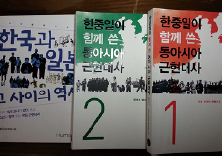
The Necessity and Challenges of Publishing Common Textbooks on Northeast Asian History
Rising to the East Asia's challenge of overcoming conflicts over historical perception and territory, and the legacies of colonial rule and the Cold War, historians and civil-society organizations in Korea, China, and Japan have published common auxiliary history textbooks, such as The History That Opens the Future, through voluntary historical dialogue. Reports on the Korea-Japan and China-Japan Joint History Research Committees as government channels have been published, but President Park Geun-hye's proposal on November 14, 2013 to publish common textbooks on Northeast Asian history is highly significant in that she was the first among the heads of the three states to make such a proposal. In support of her proposal, the Foreign Ministry of China expressed their wish that "Japan will take a truthful and faithful attitude toward the related matters." And President of Peking University Wang Enge (王恩哥) said that "universities in Asia should take the initiative and consider writing the textbooks together (Chuson Ilbo, December 7). The Japanese government was initially negative about the proposal, but they changed their position just one day later, welcoming and recognizing the common textbooks as important contributors to building a peaceful East Asian community.
Written by Kim Jung-hyun, Research Fellow, Office of Policy Planning, NAHF